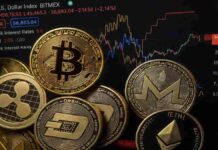# GLOBAL NEWS
In recent hours, significant developments across various regions have shaped the global landscape in economic, financial, and geopolitical matters. This report highlights key events from the United States, Europe, and Asia that reflect ongoing trends and emerging challenges.
## US
Economic indicators in the United States have raised concerns about the resilience of the labor market. A recent report revealed that the U.S. economy added 900,000 fewer jobs than previously thought, prompting analysts to reassess the Federal Reserve’s monetary policy trajectory. The unemployment rate edged up to 4.3%, signaling a slowdown in hiring that has left traders speculating about potential interest rate cuts. The Federal Reserve is now under pressure to respond to these deteriorating labor conditions, with markets anticipating a rate cut in the upcoming meetings.
In a related development, mortgage demand surged to its highest level in three years following a significant drop in interest rates. This decline marks the lowest mortgage rates since the previous year, prompting a wave of refinancing and new home purchases. However, the broader economic outlook remains clouded, with analysts warning that inflation pressures could complicate the Fed’s decision-making.
On the corporate front, Oracle’s shares soared by 27% after the company projected substantial growth driven by its cloud business. This impressive forecast has helped Oracle surpass JPMorgan in market capitalization, highlighting the increasing significance of technology firms in the current economic landscape.
## EUROPE
In Europe, geopolitical tensions have escalated, particularly following Poland’s engagement with Russian drones that crossed into its airspace. This incident marks a significant moment for NATO, as it is the first instance of a member state directly confronting Russian military assets since the onset of the Ukraine conflict. Poland’s Prime Minister has characterized the drone incursions as a deliberate provocation, prompting discussions within NATO regarding collective defense measures.
Additionally, the European Union is grappling with economic challenges, including rising inflation and sluggish growth. The eurozone reported a marginal economic growth of just 0.1% in the second quarter, with unemployment remaining at a record low. However, the European Central Bank (ECB) faces mounting pressure to address these economic indicators without resorting to aggressive rate cuts, as inflation continues to pose a challenge.
In the automotive sector, legacy car manufacturers are launching new models to counter competition from Chinese electric vehicle makers. This initiative comes amid ongoing discussions about the EU’s ban on new gasoline and diesel cars by 2035, which has sparked intense debate at the IAA Mobility auto show in Munich.
## ASIA
Asia is witnessing a mix of economic recovery and political upheaval. In China, consumer prices fell more than expected in August, raising concerns about persistent deflation. This has prompted calls for increased stimulus measures from the Chinese government to bolster economic growth. Meanwhile, the Chinese electronics sector is experiencing a surge in interest from businesses seeking to capitalize on opportunities amid ongoing trade tensions with the U.S.
In South Korea, the government is navigating the fallout from a recent immigration raid at a Hyundai plant, which led to the detention of numerous workers. This incident has sparked significant public outcry and has raised questions about labor rights and immigration policies in the country. The South Korean government is reportedly negotiating the repatriation of detainees while addressing concerns about the treatment of foreign workers.
In geopolitical terms, the region is also on edge as tensions between North Korea and the U.S. continue to simmer. Recent military drills and missile tests by North Korea have heightened fears of instability, prompting discussions about defense strategies among neighboring countries.
As these developments unfold, the global community remains vigilant, recognizing that the interplay of economic and political factors will continue to shape the international landscape in the coming weeks.
In conclusion, the events of the past 12 hours illustrate the interconnectedness of global markets and geopolitical dynamics. As the U.S. grapples with economic uncertainty, Europe faces challenges in maintaining stability amid rising tensions, and Asia navigates both economic recovery and political challenges, the world watches closely for the implications of these developments.





